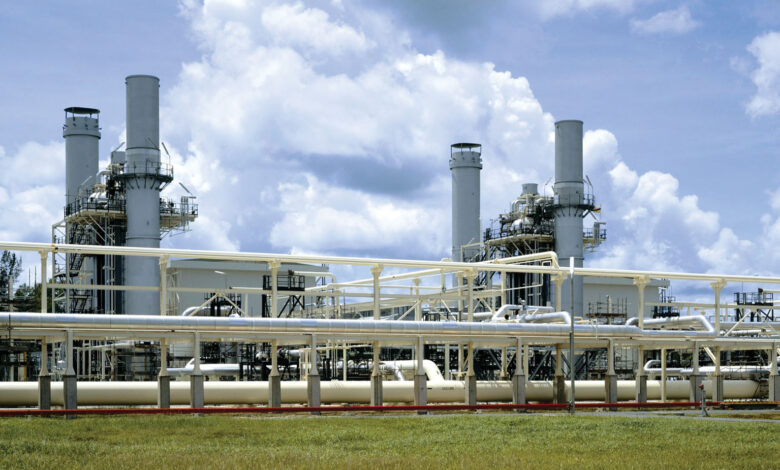Reducing demand key to Government’s vision for gas security

As an enabler of the publication of Energy Security in Ireland to 2030, in November 2023 the Government released a research paper examining the security of Ireland’s gas supply arguing that there is a need for both demand reduction and the introduction of “a strategic gas emergency reserve”.
Essentially a complication existing energy policies which can contribute to increased gas security of supply, Securing Ireland’s Gas Supplies, a research paper published by the Department for the Environment, Climate and Communications, emphasises the importance of reduction of demand, already a key pillar under the Climate Action Plan.
Under the Climate Action Plan, the State is obliged to produce 2GW of new flexible renewable gas-fired power generation, with natural gas to be used as a backup in times of low renewable production.
Also, through the aegis of the Climate Action Plan, the Government is committed to phasing out and ending the use of coal and peat in electricity generation, meaning that natural gas will continue to have a significant role in power generation in this decade.
Further key to demand reduction is the acceleration of the delivery of renewables. The research paper reaffirms the State’s commitment to delivering energy via onshore wind, offshore wind, and solar through a competitive framework for said renewable sources to account for 80 per cent of electricity demand from renewable energy by 2030.
“The addition of further renewables will place downward pressure on net demand for gas, particularly as large volumes of offshore wind connects at the end of this decade,” the paper states.
Another key enabler of reduction of gas demand comes from the Government’s efforts to change the source of home heating in urban areas, namely through retrofitting of homes with heat pumps and through the proposed establishment of district heating.
Under the National Retrofit Programme, the Sustainable Energy Authority of Ireland (SEAI) is tasked with the delivery target of retrofitting 500,000 homes by 2030, the installation of 400,000 renewable energy heat pumps in existing premises by 2030, in addition to only renewable energy heating systems in new dwellings from 2023.
The research paper asserts that the retrofitting programme has already delivered a reduction in residential natural gas connections and that retrofitting measures will “continue to increase the energy efficiency of our housing stock, deliver the commitment to phase out gas boilers and thereby contribute to putting downward pressure on overall gas demand overtime as well as peak day gas demand”.
In tandem with retrofit objectives is the establishment of large-scale district heating, with existing targets of up to 0.8TWh by 2025 and 2.7TWh by 2030, across residential, commercial, and public sector buildings using waste heat or renewable energy sources.
“This [district heating] will have a positive impact on the efficiency of natural gas used and put downward pressure on net gas demand by providing alternative energy sources,” the research paper says.
On establishing how heat for commercial buildings can enable gas demand reduction, the research paper outlines the potential of already-published targets via measures such as a ramp-up of zero emissions heat and district heating in commercial buildings, accelerating uptake of alternative fuels, blending in zero-emission gas and decreasing embodied carbon in construction materials.
“The National Heat Policy Statement… as well as the Renewable Heat Obligation… will accelerate transition to renewable heat, incentivising switch for industrial energy demand from gas to renewable electricity. These measures will contribute to limiting upward pressure on gas demand, while work is ongoing to develop further measures to effectively target harder to abate industry sectors,” the paper says.

“This package… will strengthen Ireland’s approach to risk and resilience, taking an integrated, systemic, medium-term view of where we can do more and how.”
Minister for the Environment, Climate and Communications, Eamon Ryan TD
Controlling gas demand
There are a number of active policy and operational decisions that will impact average gas demand.
Looking beyond 2030, MaREI Centre of University College Cork (UCC) has examined the role of natural gas in the energy transition consistent with the State’s carbon budgets up to the period to 2050 across a number of scenarios.
Uncertainties remain when forecasting trends, particularly beyond 2030 given the many variables that exist, however, MaREI has outlined demand projections in a ‘high demand scenario’, which refers to strong growth in electricity demand, as well as a ‘lower demand scenario’, which refers to high renewable electricity capacity and lower electricity demand growth.
While the MaREI research illustrates there may be varying level of natural gas demand in the early 2030s, a similar pattern is observed in terms of level of gas demand consumed in 2040 and 2050 period. Natural gas demand sees a significant reduction of between 68 per cent and 78 per cent from 2030 to 2040, depending on the scenario considered.
MaREI asserts that these projections demonstrate “the significant reduction of natural gas use anticipated, reducing the reliance on imports during this period and its limited role in our energy system as we reach 2040”.
New pipelines and storage
While the rollout of renewable and new heating sources are key to demand reduction, the paper acknowledges that LNG will continue to be required in the immediate decade to come. This presents a challenge to the demand reduction objective as Ireland’s indigenous gas supplies are becoming depleted.
In 2022, 26 per cent of Ireland’s gas demand was supplied from indigenous sources – the Corrib gas field and small volumes of biomethane. The balance of supply, 74 per cent, was met from the UK via Moffat in Scotland. Ireland does not have any gas storage or liquefied natural gas (LNG) facilities. GNI is currently carrying out enhancements to the UK facilities to increase the system’s ability to meet peak day demand.
Under existing targets, the pipeline systems in the UK are expected to be able to be operated independently of each other from 2024/25, although it will remain that there are points where they are physically adjacent to each other. The pipelines themselves are entirely separate, however, an existing constraint relates to a common pipeline header in the Brighouse Bay compressor station, which will be separated.
In addition to the establishment of new pipelines, Energy Security in Ireland to 2030, outlines that there is a need for storage. While the State maintains 90 days of oil reserves at all times, there is currently no mandatory LNG storage.
While research in Energy Security to 2030 has found that current supplies and infrastructure are adequate to meet demand projections, it nonetheless warns that any future disruption could “impact heavily on energy security” and that “there is a need to introduce a strategic gas emergency reserve”.
Stressing that reserves would be used only if a disruption to gas supplies occurs, Energy Security in Ireland to 2030 says that it is anticipated that floating gas reserve (FSRU) will best meet the needs of the criteria set by government. Gas Networks Ireland has been tasked with returning a detailed proposal to Government for final approval in 2024.
Minister for the Environment, Climate and Communications Eamon Ryan TD has said: “A range of initiatives are in place and in development to improve energy efficiency and increase demand flexibility, as important enablers of a more secure energy system.
On the Energy Security to 2030 energy security strategy, Ryan says: “This package… is centred on continuing progress and action. It will strengthen Ireland’s approach to risk and resilience, taking an integrated, systemic, medium-term view of where we can do more and how.
“It is an important contribution to a more secure, sustainable, and affordable energy system for Ireland and I will drive its rapid and comprehensive implementation.”





